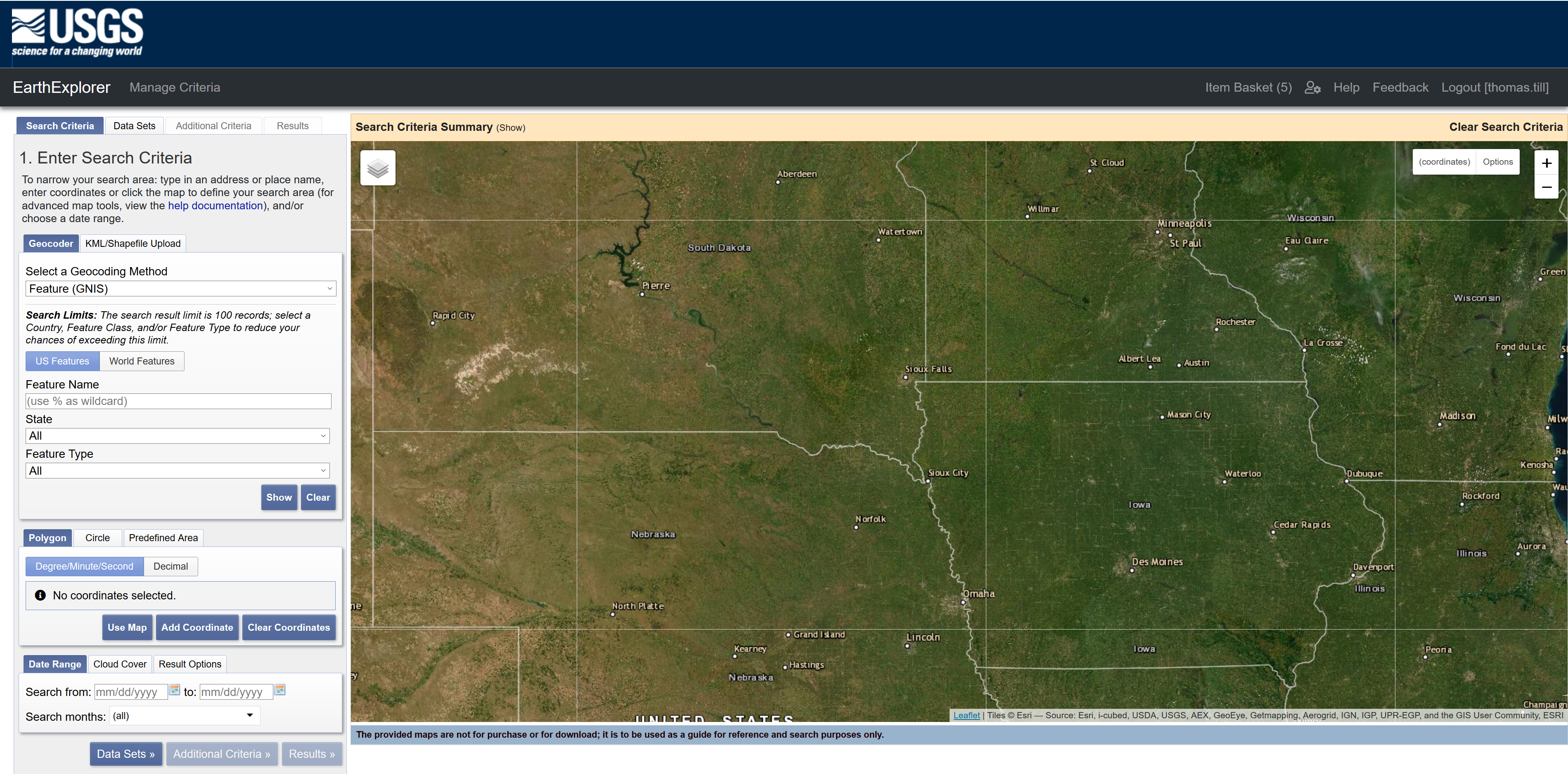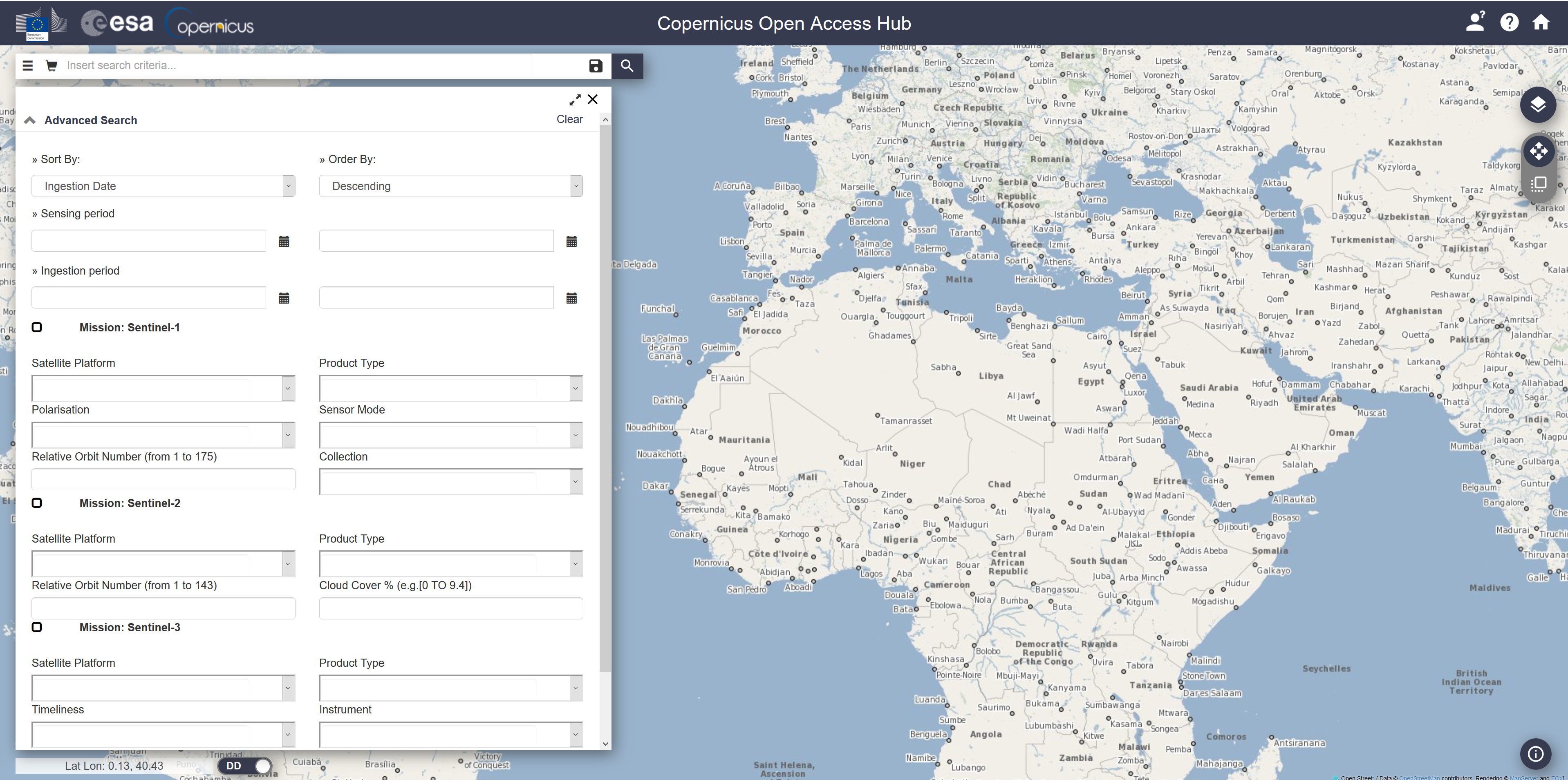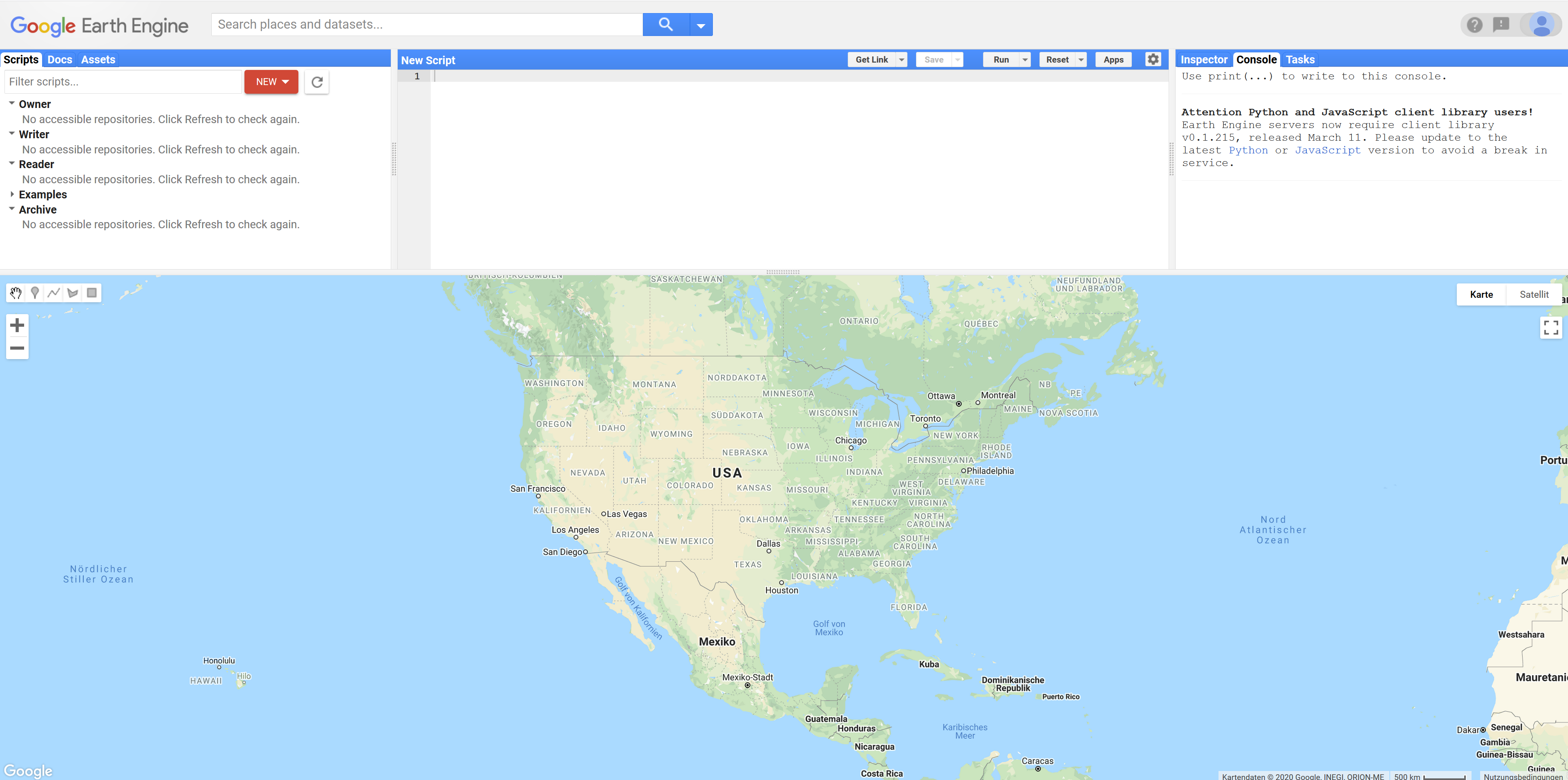en:courses:training:element-01:code-examples:lc-ce-07-02
E01-2 Overview of data sources
Generally one can download from two types of data sources. Which one you should use depends on how many satellite scenes you need and what kind of (e.g. which processing level).
- You can use a viewer as web interface providing a GUI to get an overview of tiles processed from satellite scenes. In addition you can use such viewers to download tiles if you just need few of them, for example when you are investigating only small to medium areas. It's also an easy way for unexperienced users.
- If you want to download more tiles and directly use them for example in R, it is recommended to use an API. You will get an overview of both on that page.
3 sources are presented here:
- EarthExplorer (Fig. 1): It is run by USGS (United States Geological Survey) and provides access to many missions data sets like Landsat 8 Level-2 data, SRTM digital elevation, NASA's MODIS, unmanned aircraft system (UAS) data sets and NASA's LandCover data sets. For bulk download from EarthExplorer you simply can add all desired tiles to the cart and download them together (after signing in). The format of the image data is GeoTIFF, but there is the option to order them in other formats like ENVI, HDF-EOS2 or NetCDF. This is possible via this website, where you have additional options for bulk download through an API.
 Fig. 1: EarthExplorer viewer with search panel.
Fig. 1: EarthExplorer viewer with search panel.
- Copernicus Open Access Hub (Fig. 2): The Copernicus Open Access Hub operated by ESA (European Space Agency) in an online application where you can view and download all Sentinel missions data sets on Level-2 (USGS only provides Level-1 data). For bulk download (and analysis) you have three different options. In the viewer you add all images you want to download to the cart (after signing in and searching) and receive a metalink file containing all your download URLs. You need to open that file in a third party download manager. A list of common used download managers can be found here. Either from bulk or single download the image data format from Copernicus Hub is .jp2, one file for each band. Standard GIS software of course is able to read and convert the format; for processing and analysis in R you need the “raster”-package to read and convert them. Another option provided by ESA, the Sentinel Toolbox “SNAP”. It's a desktop application with GUI which allows you to download, convert and analyze the satellite images. For better performance, the offered Copernicus API Hub is recommended. You can access it in R using the sen2r package which also comes with a GUI. It is also used for the exmple of landcover classification given in E01-3 Land cover classification of a scene from Sentinel-2. The used sen2r package for R also comes with a GUI.
 Fig. 2: Copernicus Open Access Hub viewer with search panel.
Fig. 2: Copernicus Open Access Hub viewer with search panel.
- Google EarthEngine (Fig. 3): EarthEngine is a very powerful cloud-based platform including a viewer as well as download and advanced analysis options through Python or JavaScript. You can insert scripts directly into the script panel in the web interface and see your (uploaded) files and analysis outputs in the viewer underneath. Bulk download is possible with additional scripts.
 Fig. 3: EarthEngine viewer with script panel.
Fig. 3: EarthEngine viewer with script panel.
- For brief comparison of the three introduced APIs, see the following table.
| Copernicus API Hub | Earth Engine | EarthExplorer API | ||
|---|---|---|---|---|
| Conclusion | Practical access through API; only Sentinel data sets | Huge archive of data sets, allows for direct online analysis, inconvenient download | ||
| Operator | ESA – Copernicus Program (European Space Agency) | USGS | ||
| Landsat / Sentinel | Access only to all Sentinel missions data sets | Both, in addition access to many other missions data sets like SRTM digital elevation, NASA's MODIS, unmanned aircraft system (UAS) data sets, many other derived data products (NASA's LandCover and ESA's GlobCover land cover data sets) | Both, but only Sentinel-2 data and at Level-1. In addition you have access to many other missions data sets like SRTM digital elevation, NASA's MODIS, unmanned aircraft system (UAS) data sets, many other derived data products (e.g. NASA's LandCover data sets) | |
| Available file types | .jp2 (in a ZIP-compressed SAFE (Standard archive for Europe) archive) | GeoTIFF | GeoTIFF and ENVI | |
| Bulk download | Yes | Yes, additional scripts required | Yes | |
| Advantages | Easy access and download options of Sentinel missions data thanks to multiple ways using the R package sen2R and the API or SNAP | Very advanced cloud-based platform for access and analysis of earth observation (EO) data due to directly accessable Sentinel (and others) archive and extreme high processing power in Google data centers, huge community ensuring continous improvement | ||
| Disadvantages | Only Sentinel missions data available | Usage difficulties for people with limited programming skills and only few output options, mostly restricted by size or fees. | ||
| Integration in R | sen2r (provides producing output in GeoTIFF or ENVI format Reference and documentation | rgee (still in development, could have some bugs)) Reference and documentation | One could use e.g. the getSpatialData-package. It's still in developmental phase and could have some bugs. It accesses EarthExplorer and other platforms for download (e.g. Sentinel data from Copernicus API Hhub) | |
| Website | https://scihub.copernicus.eu/twiki/do/view/SciHubWebPortal/APIHubDescription | https://earthengine.google.com/ Guides and tutorials | ||
en/courses/training/element-01/code-examples/lc-ce-07-02.txt · Last modified: 2022/03/13 19:16 by 127.0.0.1
